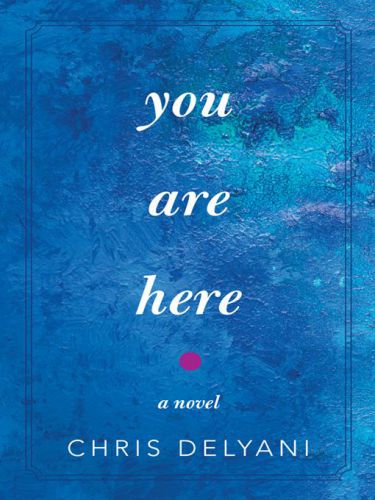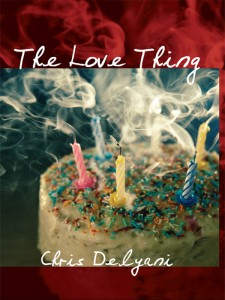THE FIRST STRAW
I first discovered drinking straws back in kindergarten. They used to come with the half-pint milk cartons that were delivered to our schoolroom at lunchtime. The straws were only a few inches long and as thin as coffee stirrers—the perfect size for a five-year-old hand—and the straw’s whiteness, if I waved it vigorously, allowed me to “see” a word glowing in the air before it vanished. Somehow or other I got my hands on a clean straw, and not much longer after that, as far as I can remember, I used it to write my first words in the air.
I loved to wave my straw when I was alone. I wasn’t alone often, though. We lived on the second floor of a three-decker house in Chelsea, Massachusetts—my parents, my two older brothers, my older sister, and me. I also had a cousin around my age, who lived with my aunt and uncle on the first floor and was always coming upstairs, wanting to play. They all thought I was crazy. My mom kept warning me that one of these days I’d poke someone’s eye out. Eventually she got smart: instead of threatening me with the wooden spoon or an early bedtime whenever I refused to finish my french fries, she’d threaten to take away the straw. She got me to eat a lot of french fries that way.
One time I lost my straw altogether. I remember having it with me in my yellow Snoopy lunchbox when I went to school, but when I got home, it was gone. I went stir-crazy. I felt like an artist who’d been deprived of his paintbrushes. Waving my finger in the air wasn’t good enough. It was a glorious day when I finally got my hands on a new straw.
As I got better with words, I graduated from waving a straw to waving pencils and pens. I’d say a thought aloud and wave the pencil as I spoke. It was like having a diary with disappearing ink. One year I got a magic set for Christmas. Practicing the magic tricks got old soon enough, but the set came with a black magic wand with a white tip, perfect for air-writing against dark backgrounds. By fifth grade my favorite air-writing instrument was a school-issued pen with a blue cap and a blue bottom. If I held the pen by the cap and waved it in front of the whitewashed door of my bedroom, the words created by the blue bottom would show up against the white. I had that pen for years. I wish I knew what happened to it, and what happened to the magic wand.
My high school and teenage years were, by necessity, straw- and pen-free. I was growing into a self-conscious manhood; the last thing I needed other people to know was my life as a closet pen-waver. It must have been around then that I transferred my passion for writing from the air to the paper, and discovered that there were already printed words, written by people called “writers,” that inspired me to take after them. I’ll never forget the chill down my spine one autumn morning in my senior year in high school, when I first met Lady Macbeth: “O never shall sun that morrow see!” Until then I hadn’t heard anything about her.
The first novel I ever wrote was soon after college, where I’d spent four years earning a journalism degree and discovered, almost as soon as I got out, that there were no jobs to be had. Today, the nicest thing I can say about that novel was its made-for-TV-movie title: “The Pursuit of Ava Marsden.” The title character was a woman who murders her husband and thinks that her husband has returned from the dead to stalk her; the action plays out in a secluded mansion during a thunderstorm. I was sure I was on the path to glory. I managed to get a literary agency interested in reading it; I duly sent off three chapters; and a couple months later got a polite letter telling me that based on the material I sent them, they were “not confident” they could make a successful pitch to a publisher. I knew instinctively why they weren’t confident—the story sucked. But I didn’t know why. I needed training. I blew the last of my savings to sign up for a night course at the Harvard Extension School, with the short story writer Pamela Painter presiding.
That was my first writer’s workshop. The story I submitted was of a guy from South Boston, a homophobe, who tries and fails to get into a sold-out Red Sox game, winds up in the middle of Boston’s annual gay pride parade instead, and happens to spot his own beloved younger brother in the crowd; the hero plunges into the sea of homosexual humanity to “save” his brother and gets swallowed up. I was certain the story was as good as anything written by my short-story heroine, Flannery O’Connor. I envisioned the rest of the class bursting into applause in reaction to it. Can you guess what I got instead? My peers derided my South Boston homophobe as too much a caricature; that the gay people he tussles with were also caricatures; that my descriptions of the crowd were too generic; that I overused the word “fag.” But that was the character speaking, I wanted to say. He’s the homophobe: not me! I left the classroom as though I’d been lashed all over my body. Later in the semester I submitted another story, of a woman going home to her family in Albany, N.Y., to attend her niece’s disastrous wedding. It met with more success—for one thing, I knew better than to expect applause—but I still got a sinking feeling that something wasn’t quite right.
Not until the end of the semester, when Professor Painter assigned a life-transforming assignment, did I figure out what was missing. Her assignment: copy out the first page and a half of one of our favorite short stories. That was it. Just copy it. I chose “Exchange Value” by Charles Johnson. “Me and Loftis came in by the old lady’s window,” I copied. “There was some kind of boobytrap—boxes of broken glass—that shoulda warned us Miss Bailey wasn’t the easy mark we made her out to be.” The words were ordinary words, words that I knew. But I got a strange sensation that I never got when I wrote my own material—the joy I used to feel when I waved that straw.
When I got my typed pages back I saw none of the red-marker scribbles I’d come to expect from this exacting professor. Instead she wrote, “Notice the texture, the attention to detail.” She could also have pointed out the distinctive voice of the first-person narrator (opening with “me and Loftis”); the gripping action of the first sentence (two teenage boys breaking into “the old lady’s” apartment); the detail of the broken glass, set into the story like a precious stone, serving not only as a sensory detail, not only as a product of the downtrodden setting, but as an omen for the two young African-American thieves. “Language is all you have,” Professor Painter loved to say. But in that short story, I saw, for the first time in my life, that in all great writing, language is all you have and then some.
I soon started copying out other short-stories: “Gryphon” by Charles Baxter, “Meneseteung” and “Carried Away” by Alice Munro, “Everything That Rises Must Converge” by Flannery O’Connor, “Death on Christmas Eve” by Stanley Ellin, who manages in a mere six pages to distill a family’s epic, murderous hatred. Ellin’s story was the first that I copied without having read it first—I read it as I copied, not knowing what to expect. Even as I write this, I get a chill when I think about scrawling out that final, shocking bit of dialogue.
But my single proudest achievement in my hobby as a plagiarist was F. Scott Fitzgerald’s “The Great Gatsby,” all 182 pages of it. That was Professor Painter’s idea: she told the class we’d learn more about fiction by copying out that book (“a perfect novel,” she said) than a year’s worth of workshops. I’d already had a six-year love affair with “The Great Gatsby”—it was given to me for Christmas in my junior year of high school by my sister-in-law, a newspaper television critic and a passionate devotee of great writing, who once told me that Fitzgerald’s style was one she’d tried to emulate when she first started getting her byline into newspapers. To copy out that book would be the ultimate expression of love. I opened my notebook and forged ahead.
“In my younger and more vulnerable years,” I wrote, “my father gave me some advice that I’ve been turning over in my mind ever since.” Of course I hadn’t forgotten any of the characters or any of the events, but it was truly transporting to linger over the words that writing longhand forced me to do: the narrator, Nick Carraway, beholding Gatsby’s mansion, “spanking new under a beard of raw ivy”; Gatsby greeting Nick “with one of those rare smiles with a quality of eternal reassurance in it, that you may come across four or five times in life;” the “exhilarating ripple” of Daisy Buchanan’s voice; Gatsby’s murder in the swimming pool as a “holocaust;” Nick’s final, damning assessment of Daisy and her husband, Tom, “who smashed up things and creatures and then retreated back into their money or their vast carelessness, or whatever it was that kept them together.” It was the straw all over again, except that it was better, more profound, more satisfying. What I’d copied wasn’t some kid waving a wand in the air; this was the work of a maestro with a conductor’s baton, summoning up a symphony of words.
In 1993 I moved to California to devote myself to writing fiction. I once read in a capsule biography of the writer Mavis Gallant that she quit her job as a journalist and moved to France to “devote” herself to fiction; I wanted that to be a phrase in my own capsule biography someday. I adopted the habit of rising at five o’clock every morning on weekdays to catch up on the classics I’d missed at school: “Jane Eyre,” “Middlemarch,” “Moby Dick,” “Anna Karenina.”
But as enriching as this was, I couldn’t keep procrastinating forever. I began to divide my time between reading great books and attempting to write a book of my own. Even now I’m still getting up that early to write. I can’t face my day job if I don’t. And I don’t know what will ultimately come of it. But it doesn’t matter. I write today for the same reason that I picked up the first straw back in kindergarden, for the pleasure of moving my hand, watching the words take shape, and hoping that maybe, every once in a while, those words will make music.







